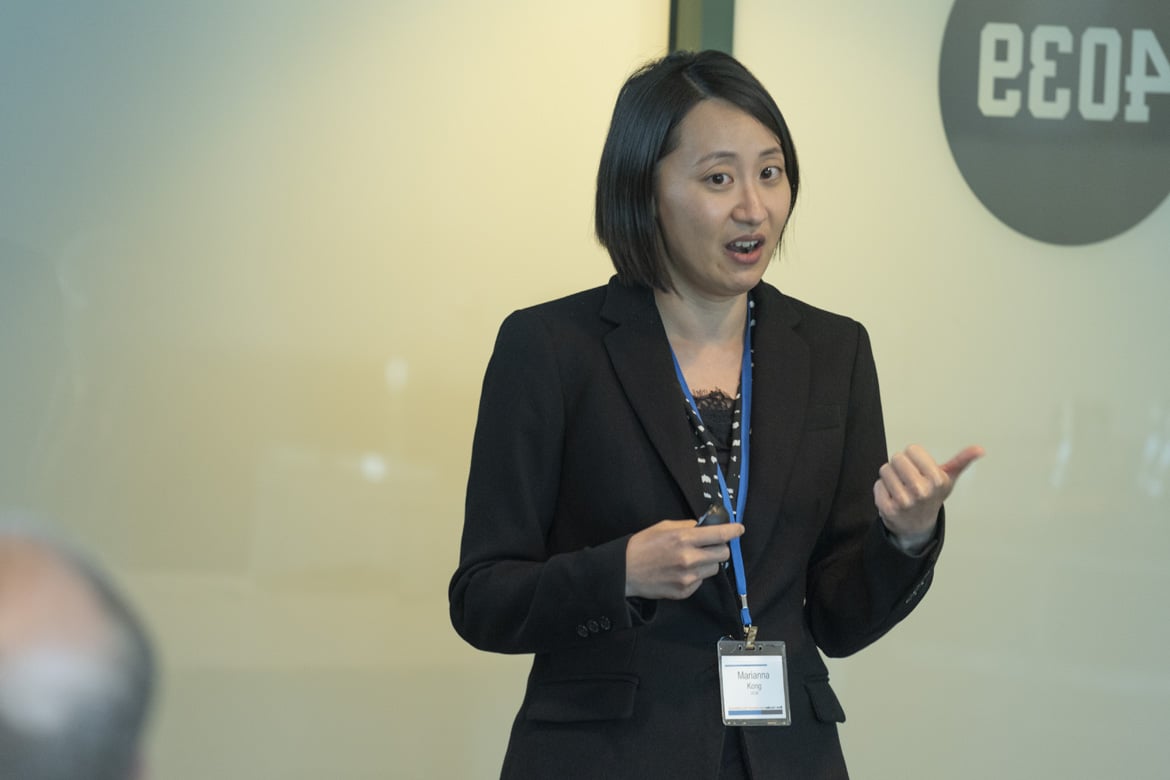In medical training, teaching clinics work as incubators that create gifted primary care physicians. But faculty physicians and residents often spend just one or two half days per week in teaching clinics, hampering the training experience and even the quality of care delivered to often underserved patient populations.
To grow as primary care physicians, residents must make the most of their time in clinic. As highlighted during a presentation at the Bellin Health/AMA Team-Based Care Training Camp, one method to do that is to build cohesive teams in teaching clinics.
In examining the challenges teaching facilities face in a number of arenas, including team-based care, a group of physician-educators visited more than 40 family medicine, internal medicine, and pediatric residency programs. Marianna Kong, MD, was among them.
“We wanted to talk about how do you blend the two goals that teaching practices have,” said Dr. Kong, a physician practice transformation specialist at the Center for Excellence in Primary Care at the University of California, San Francisco. “One goal is clinical care, and the other goal is education. How do you have those two weave together and be synergistic as opposed to constantly opposing one another?”
A clinic-first model
Dr. Kong and her colleagues took the successful strategies they encountered during their visits and catalogued them as the building blocks for providing excellent care and training. Collectively, those building blocks fit into what Dr. Kong referred to as a clinic-first model.
Some of the most significant steps to implementing this model include:
- Consistent scheduling for residents to prioritize continuity and eliminate inpatient-outpatient tension.
- Developing a small core of clinic faculty.
- Creating operationally excellent practices.
- Building cohesive and stable clinic teams.
Key tenets for team-based care
In referring specifically to the challenges of team-based care in teaching clinics, Dr. Kong highlighted several areas that thriving programs have worked to emphasis and improve.
Stable team structures. Residents who are assigned to working with the same medical assistant (MA) on a schedule that is on a set day of the week, not one that is formed based on the demands of the hospital. At Greater Lawrence Family Medicine Residency, a teaching health center in Massachusetts, residents work on the same team throughout their entire GME tenure. Nurse practitioners oversee mini-teams and the larger teams are guided by faculty members.
Co-location. Traditionally, MAs and residents are in separate rooms requiring people to go back and forth to have any communication. Dr. Kong cited a 2015 study indicating that “teams with dense daily face-to-face interactions among all team members are better positioned to deliver higher quality cardiovascular disease care at a lower cost.”
Dr. Kong highlighted the integrated work space at Central Washington Family Medicine in Yakima and how co-locaton put people who are working together most frequently near each other, which creates a more cohesive team environment.
Sharing the care. Shifting to a team-oriented care model allows all team members to contribute and take ownership of a patient’s health. At Erie Family Health Center in Pennsylvania, RNs who take on this enhanced role allows them to teach spirometry, and MAs can teach clinic flow. Non-physician staff members also participate in morbidity and mortality conferences.
Increasing staff. Having more MAs allows them to take on more responsibilities, such as taking histories and vital signs, conducting medication reconciliation and completing orders.
The MAs remain with the patient throughout their entire visit, functioning as in-room documentation support while the physician is with the patient and then walking the patient through an after-visit summary. When residents work within this model, the scope of the MA’s responsibilities differs based on where a resident is in their training.




